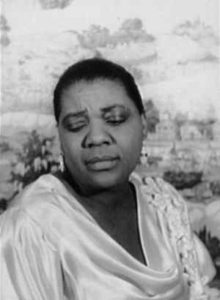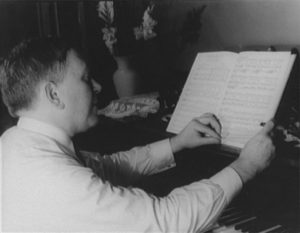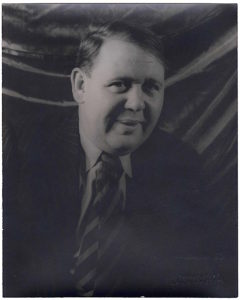It’s very nice to be blogging regularly again. And yes, I plan to keep it up. How about that?
Archives for April 27, 2006
TT: So you want to see a show?
Here’s my list of recommended Broadway and off-Broadway shows, updated weekly. In all cases, I either gave these shows strongly favorable reviews in The Wall Street Journal when they opened or saw and liked them some time in the past year (or both). For more information, click on the title.
Warning: Broadway shows marked with an asterisk were sold out, or nearly so, last week.
BROADWAY:
– Avenue Q* (musical, R, adult subject matter and one show-stopping scene of puppet-on-puppet sex, reviewed here)
– Awake and Sing! (drama, PG-13, adult subject matter, reviewed here, closes June 11)
– Bridge & Tunnel (solo show, PG-13, some adult subject matter, reviewed here, closes July 9)
– Chicago* (musical, R, adult subject matter and sexual content)
– Doubt (drama, PG-13, adult subject matter and implicit sexual content, reviewed here)
– The Lieutenant of Inishmore (black comedy, R, adult subject matter and extremely graphic violence, reviewed here, now in previews for a Broadway reopening on May 3)
– The Light in the Piazza (musical, PG-13, adult subject matter and a brief bedroom scene, closes July 2, reviewed here)
– Sweeney Todd (musical, R, adult subject matter, reviewed here)
– The 25th Annual Putnam County Spelling Bee* (musical, PG-13, mostly family-friendly but contains a smattering of strong language and a production number about an unwanted erection, reviewed here)
OFF BROADWAY:
– I Love You Because (musical, R, sexual content, reviewed here)
– Jacques Brel Is Alive and Well and Living In Paris (musical revue, R, adult subject matter and sexual content, reviewed here)
– Slava’s Snowshow (performance art, G, child-friendly, reviewed here)
CLOSING THIS WEEKEND:
– A Safe Harbor for Elizabeth Bishop (one-woman show, PG, some adult subject matter, reviewed here, closes Sunday)
CLOSING SOON:
– Defiance (drama, R, adult subject matter and sexual content, reviewed here, closes June 4)
TT: Familiar faces
 Carl Van Vechten is one of those fascinating minor characters who, like Zelig or Forrest Gump, was forever popping up in the damnedest places. At various times in his life (he died in 1964) he was a music critic, a dance critic, a novelist manqué, a self-appointed publicist for the Harlem Renaissance, and—perhaps most lastingly—a self-taught photographer who specialized in celebrity portraits. (He was also gay, and his hitherto unknown homoerotic photos are about to be published for the first time.) He seems to have known everybody who was anybody, and if they were famous he took their pictures. The Library of Congress Web site has a pretty good online gallery of his portraits, many of which, like his 1936 study of Bessie Smith, remain among the best-remembered images of their subjects. Yet few art critics have had anything to say about his work save in passing, and though I know a reasonable amount about him—one of his portraits of H.L. Mencken is reproduced in The Skeptic—it wasn’t until yesterday that I finally saw an exhibition of his photographs.
Carl Van Vechten is one of those fascinating minor characters who, like Zelig or Forrest Gump, was forever popping up in the damnedest places. At various times in his life (he died in 1964) he was a music critic, a dance critic, a novelist manqué, a self-appointed publicist for the Harlem Renaissance, and—perhaps most lastingly—a self-taught photographer who specialized in celebrity portraits. (He was also gay, and his hitherto unknown homoerotic photos are about to be published for the first time.) He seems to have known everybody who was anybody, and if they were famous he took their pictures. The Library of Congress Web site has a pretty good online gallery of his portraits, many of which, like his 1936 study of Bessie Smith, remain among the best-remembered images of their subjects. Yet few art critics have had anything to say about his work save in passing, and though I know a reasonable amount about him—one of his portraits of H.L. Mencken is reproduced in The Skeptic—it wasn’t until yesterday that I finally saw an exhibition of his photographs.
It happens that I recently had occasion to mention Van Vechten in the fourth chapter of Hotter Than That: A Life of Louis Armstrong, so he was already on my mind when I heard that James Cummins Bookseller, an Upper East Side dealer in rare books, was putting on a show of Van Vechten portraits. I dropped in to take a look, and was—not to put too fine a point on it—dazzled.
 “Carl Van Vechten Portraits” consists of sixty-four photographs, virtually all of them of artists whose names are known to this day, including James Baldwin, Marlon Brando, George M. Cohan, Aaron Copland, F. Scott Fitzgerald, John Gielgud, Dizzy Gillespie, Billie Holiday, Langston Hughes, Sinclair Lewis, Joe Louis, Henri Matisse, Somerset Maugham, Joan Miró, Laurence Olivier, Eugene O’Neill, Jerome Robbins, Gertrude Stein, Alfred Stieglitz, Virgil Thomson, Evelyn Waugh, and Orson Welles. (The show also features the same Mencken photo I used in The Skeptic.)
“Carl Van Vechten Portraits” consists of sixty-four photographs, virtually all of them of artists whose names are known to this day, including James Baldwin, Marlon Brando, George M. Cohan, Aaron Copland, F. Scott Fitzgerald, John Gielgud, Dizzy Gillespie, Billie Holiday, Langston Hughes, Sinclair Lewis, Joe Louis, Henri Matisse, Somerset Maugham, Joan Miró, Laurence Olivier, Eugene O’Neill, Jerome Robbins, Gertrude Stein, Alfred Stieglitz, Virgil Thomson, Evelyn Waugh, and Orson Welles. (The show also features the same Mencken photo I used in The Skeptic.)
The catalogue contains an introduction by Rachel Cohen that includes this revealing passage:
And this, I think, is one of the nicest ways to see Van Vechten’s photographs—as parties. At a party, one person leads to the next—in each individual photograph there is the constant sense of the social scene, almost as if the party is going on in another room and Van Vechten and the subject have just stepped in here for a minute so that they can make themselves heard. It’s this quality that makes the collected body of work absolutely unlike that of any other photographer I know—it is a world of hundreds upon hundreds of relationships, of people who were neighbors and friends and artistic collaborators, who signed one another’s petitions, and smashed furniture at one another’s parties and cheered for one another’s achievements. You could begin with almost any photograph in this catalogue, or in the whole exhibition, and trace your way through the lives of almost everyone included.
 Nice—and yet you don’t come away with the impression that Van Vechten was an especially serious artist, which I think is just about fair enough. His portraits lack both the personal stamp and the ultimate intensity of high photographic art. I don’t know that I’d be likely to recognize any of the ones I didn’t already know as Van Vechten’s simply by looking. He was no more (and no less) than a gifted amateur with a good eye and access to a lot of very famous people. Yet there is something, maybe even quite a bit, to be said about the comparative stylistic anonymity of his approach. What you see when you look at his 1940 portrait of Charles Laughton is the man himself, tortured and unsure, with no glossy overlay of self to confuse the issue. What you see when you look at, say, Irving Penn’s wonderful 1947 double portrait of Mencken and George Jean Nathan is—well, Irving Penn.
Nice—and yet you don’t come away with the impression that Van Vechten was an especially serious artist, which I think is just about fair enough. His portraits lack both the personal stamp and the ultimate intensity of high photographic art. I don’t know that I’d be likely to recognize any of the ones I didn’t already know as Van Vechten’s simply by looking. He was no more (and no less) than a gifted amateur with a good eye and access to a lot of very famous people. Yet there is something, maybe even quite a bit, to be said about the comparative stylistic anonymity of his approach. What you see when you look at his 1940 portrait of Charles Laughton is the man himself, tortured and unsure, with no glossy overlay of self to confuse the issue. What you see when you look at, say, Irving Penn’s wonderful 1947 double portrait of Mencken and George Jean Nathan is—well, Irving Penn.
I suspect it makes more sense, then, to approach Carl Van Vechten’s portraits as historical documents rather than art objects. But however you choose to see them, they’re definitely worth seeing.
Alas, Van Vechten seems never to have photographed Louis Armstrong, which is too bad: I would have loved to include one of his portraits in Hotter Than That. As I was leaving the building, though, I walked past the Margo Feiden Galleries, in whose show window I saw a gorgeous Al Hirschfeld caricature of Satchmo. It was exactly the kind of serendipitous moment that New York offers in daily profusion—the reason why, in spite of everything, I live here and wouldn’t dream of leaving.
* * *
“Carl Van Vechten Portaits” is up at James Cummins Bookseller, 699 Madison Avenue, through Saturday.
TT: Almanac
“But like all well-bred individuals, and unlike human anarchists, the cat seldom interferes with other people’s rights. His intelligence keeps him from doing many of the fool things that complicate life. Cats never write operas and they never attend them. They never sign papers, or pay taxes, or vote for president. An injunction will have no power whatever over a cat. A cat, of course, would not only refuse to obey any amendment whatever to any constitution, he would refuse to obey the constitution itself.”
Carl Van Vechten, The Tiger in the House
